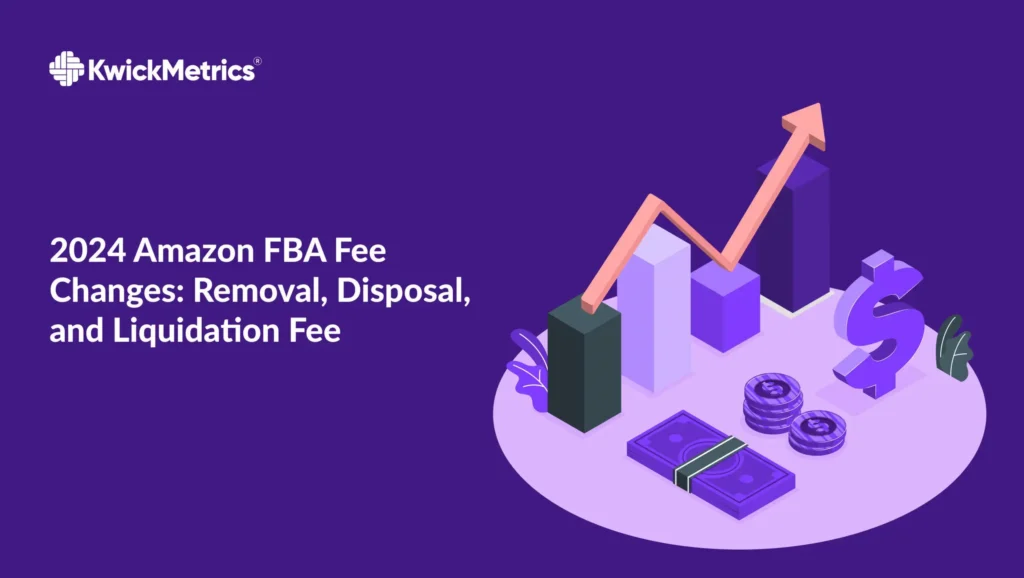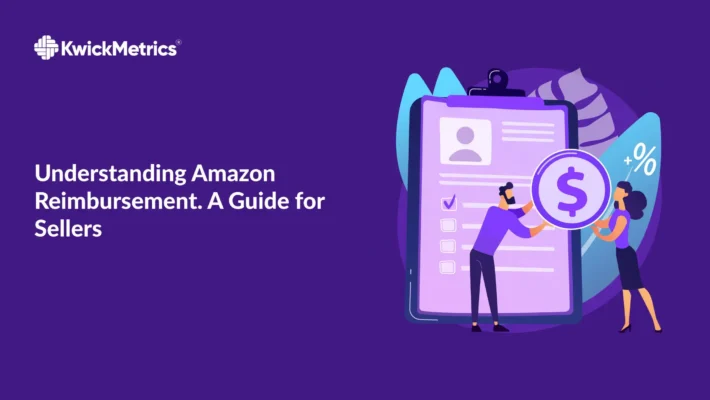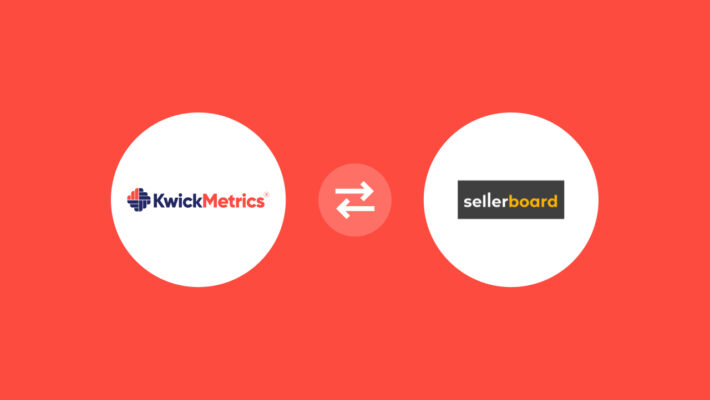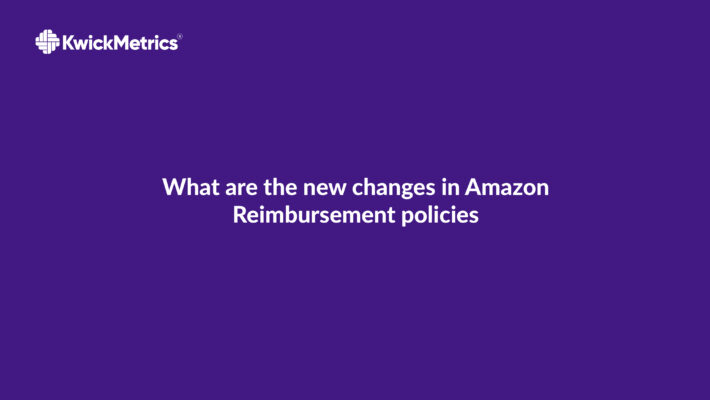2024 Amazon FBA Fee Changes: Removal, Disposal, and Liquidation Fee

Table of Contents
- What is Amazon Removal Fee?
- What are the types of Removal Fees
- Amazon FBA Fee 2024: Removal and Disposal Fee Adjustments
- Check How you much have been charged by Amazon under your current shipping Plan
- Amazon FBA Liquidation Fee Structure
- FBA Liquidations Processing Fees
- Strategies for Amazon Sellers in 2024
- How to Calculate Removal Fee Costs?
- Boost Your Sales With KwickMetrics
- How Removal Fees Affect Earnings?
- What’s Better than Regular and Removal?
- FAQs in relation to Removal, Disposal, and Liquidation Fee
- Conclusion
The e-commerce landscape is ever-shifting, with major platforms like Amazon continuously adapting their fee structures to meet evolving needs and address rising costs. As of February 5, 2024, Amazon is set to implement substantial changes to its Fulfillment by Amazon (FBA) removal, disposal, and liquidation fees. This comprehensive guide aims to delve deeply into these adjustments, providing sellers with an in-depth understanding to navigate the transformed Amazon fee landscape effectively.
What is Amazon Removal Fee?
The Amazon Removal Fee or Disposal Fee, is the cost associated with either returning inventory items or having them disposed of by Amazon. The fee varies based on the size and quantity of the items.
What are the types of Removal Fees
There are two main types of Amazon Removal Fees:
- Removal Fee: Charged when requesting inventory to be returned, helping reduce storage fees. It is applied when requesting inventory return, with costs varying based on size and weight.
- Disposal Fee: Charged when opting to have items disposed of at the fulfillment center instead of being returned. It Incurred when opting for on-site disposal, generally faster and cheaper, but potential value loss should be considered.
Amazon FBA Fee 2024: Removal and Disposal Fee Adjustments
Understanding the forthcoming changes to removal and disposal fees is crucial for Amazon sellers aiming to optimize their operations on Amazon. Starting February 5, 2024, the adjustments will impact standard-size items differently based on their shipping weights.
Standard-Size Items
Let’s break down the changes for standard-size items:
| Shipping Weight | Before February 5, 2024 | February 5, 2024, and after |
|---|---|---|
| 0 to 0.5 lb | $0.97 | $1.04 |
| 0.5+ to 1.0 lb | $1.46 | $1.53 |
| 1.0+ to 2.0 lb | $2.20 | $2.27 |
| More than 2 lb | $2.83 + $1.06/lb above 2 lb | $2.89 + $1.06/lb above 2 lb |
Check How you much have been charged by Amazon under your current shipping Plan
Large Bulky, Extra-large, and Special Handling Items
For larger and special handling items, the changes are as follows:
| Shipping Weight | Before February 5, 2024 | February 5, 2024, and after |
|---|---|---|
| 2.0+ to 4.0 lb | $5.56 | $6.36 |
| 4.0+ to 10.0 lb | $9.43 | $10.04 |
| More than 10.0 lb | $13.05 + $1.06/lb above 10 lb | $14.32 + $1.06/lb above 10 lb |
It’s important to note that special handling items encompass a range of products, including apparel, shoes, watches, jewelry, and dangerous goods. For more details, visit Amazon Seller Central.
Key Takeaway:
Fee Structure Changes: Amazon's 2024 FBA fee adjustments impact removal, disposal, and liquidation fees. Sellers must understand the new pricing structure, especially for standard-size and larger items, to optimize their operations.
Amazon FBA Liquidation Fee Structure
Amidst the adjustments to removal and disposal fees, the FBA liquidation fee structure remains unchanged. This process involves two distinct fees:
- 15% Liquidations Referral Fee: This fee is calculated based on the item’s gross recovery value.
- Liquidations Processing Fee: Determined by the item’s size and weight.
FBA Liquidations Processing Fees
The processing Amazon fees for FBA liquidations remain consistent across various size tiers:
| Size Tier | Shipping Weight | Liquidation Processing Fee per Unit |
|---|---|---|
| Standard-size items | 0 to 0.5 lb | $0.25 |
| 0.5+ to 1.0 lb | $0.30 | |
| 1.0+ to 2.0 lb | $0.35 | |
| More than 2 lb | $0.40 + $0.20 per lb above first 2 lb | |
| Large Bulky, Extra-large, Special Handling Items | 2.0+ to 4.0 lb | $0.60 |
| 4.0+ to 10.0 lb | $0.90 | |
| More than 10.0 lb | $1.90 + $0.20 per lb above first 10 lb |
Key Takeaway:
Strategic Measures for Sellers: As sellers prepare for the fee changes, key strategies include maintaining responsible stock levels, accurate product labeling, minimizing return rates, and optimizing packaging. These measures help mitigate unnecessary fees and enhance operational efficiency.
Strategies for Amazon Sellers in 2024
As Amazon sellers gear up for the impending changes, there are strategic measures they can implement to navigate the transformed FBA fee landscape and optimize their Amazon FBA operations on Amazon.
1. Maintain Responsible Stock Levels
One of the key factors influencing removal and disposal fees is the volume of stock stored in Amazon’s fulfillment centers. By consistently monitoring and adjusting inventory management levels based on demand and seasonality, sellers can minimize unnecessary fees.
2. Accurate Labelling
Ensuring accurate and clear labelling of products is vital in streamlining the removal process. Mislabeling can lead to errors, resulting in additional costs. Investing time and effort in precise labelling practices can pay off in reduced FBA fees and operational efficiency.
3. Minimize Return Rates
High return rates can contribute significantly to removal and disposal costs. Amazon Sellers should focus on addressing customer concerns promptly, improving product listings to set accurate expectations, and exploring reasons behind returns to mitigate future occurrences.
4. Optimize Product Packaging
Well-designed and sturdy packaging not only enhances the customer experience but also reduces the likelihood of damage during handling. By minimizing the chances of products being deemed unfit for distribution, Amazon sellers can decrease disposal fees.
Key Takeaway:
Adaptability and Proactive Approach: In the dynamic e-commerce landscape, adaptability is crucial. Sellers should proactively stay informed about fee adjustments, implement strategic measures, and understand the revised fee structures to navigate changes effectively and optimize their Amazon FBA operations for sustained success.
How to Calculate Removal Fee Costs?
Calculating Amazon removal fees is crucial for effective FBA (Fulfillment by Amazon) cost management. When requesting inventory removal from Amazon fulfillment centers, fees cover handling, processing, and disposal.
Removal Fees for Items
For standard-size items, the removal fee starts at $0.97 per item, while oversized items incur a $3.12 fee. Estimate removal costs by considering item count and size classification (standard or oversize).
Amazon Fulfillment Fees
Distinct from removal fees, Amazon Fulfillment fees vary based on product size and weight. For example, small standard-sized items (max 15x12x0.75 inches) incur charges of $2.47 for 4 oz or less and $2.54 for 4-8 oz. Large standard-sized items (max 18x14x8 inches) have fees of $2.66 and $2.77, respectively.
Amazon Storage Fees
Storage fees, based on occupied cubic footage, vary:
- Jan to Sep: $0.87 per cubic foot for standard size, $0.56 for oversize.
- Oct to Dec: $2.40 per cubic foot for standard size, $1.40 for oversize.
Calculate storage fees using the formula:
Storage fee=( Length × Width × Height × Number of Units × Storage Fee Rate ) / 1728
Note: Amazon dimensions are in inches, and 1728 is the cubic inches in a cubic foot.
Dimensional and Shipping Weight
Consider dimensional weight calculated by dividing cubic inches by a factor (e.g., 166 for domestic). Shipping weight is the greater of actual or dimensional weight. Higher shipping weights may lead to increased FBA fees.
Calculating Amazon removal fees involves considering removal, fulfillment, and storage costs, along with product size and shipping weight. Understanding these factors enables better fee management for FBA businesses.
Boost Your Sales With KwickMetrics
Explore 14-day free trial! No credit card required, cancel at any time.
How Removal Fees Affect Earnings?
Understanding removal fees’ impact on revenue involves efficient inventory management, high product turnover, and accounting for removal costs when estimating profit margins.
What’s Better than Regular and Removal?
Exploring alternatives such as liquidation or partnering with third-party logistics (3PL) providers can help sellers minimize waste, recover costs, and optimize operations.
FAQs in relation to Removal, Disposal, and Liquidation Fee
1. How do the upcoming Amazon FBA fee changes affect standard-size items?
Fees for standard-size items are increasing based on shipping weight, ranging from $1.04 for 0 to 0.5 lb to $2.89 + $1.06/lb for items over 2 lb.
2. Is the FBA liquidation fee structure changing alongside removal and disposal fees?
No, the FBA liquidation fee structure remains unchanged, consisting of a 15% Liquidations Referral Fee and a Liquidations Processing Fee based on size and weight.
3. How can sellers minimize FBA removal and disposal fees?
Sellers can minimize fees by maintaining responsible stock levels, ensuring accurate labeling, reducing return rates, and optimizing product packaging.
4. Are these fee changes applicable to specific product categories on Amazon?
The fee changes apply to both standard-size and larger/special handling items, including apparel, shoes, watches, jewelry, and dangerous goods.
5. What should sellers focus on to navigate the transformed FBA fee landscape in 2024?
Sellers should focus on strategic inventory management, accurate labeling, minimizing return rates, and optimizing product packaging to effectively navigate the changed fee structure.
Conclusion
In the dynamic and competitive realm of e-commerce, adaptability is a key trait for sellers. The upcoming changes to FBA removal, disposal, and liquidation fees on Amazon necessitate proactive strategies and a thorough understanding of the adjusted 2024 Amazon FBA fee structures. By staying informed and implementing the outlined strategies, sellers can not only navigate these changes effectively but also optimize their Amazon FBA operations for sustained success.


